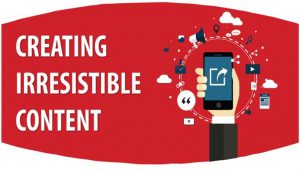Your next step in writing irresistible content is to build interest through the presentation of cold, hard facts—something the analytic learner needs. In other words, you provide proof of your claims. People are more skeptical than ever today, and their B.S. detectors have never been more accurate. The moral of the story is if you are going to make a claim, back it up. Link to your sources, provide graphs and statistics. Most people are not going to believe what you say unless you have proof. So give it to them. By the way, do not make a claim and then search for data to back it up. The analytic will see right through that.
Your next step in writing irresistible content is to build interest through the presentation of cold, hard facts—something the analytic learner needs. In other words, you provide proof of your claims. People are more skeptical than ever today, and their B.S. detectors have never been more accurate. The moral of the story is if you are going to make a claim, back it up. Link to your sources, provide graphs and statistics. Most people are not going to believe what you say unless you have proof. So give it to them. By the way, do not make a claim and then search for data to back it up. The analytic will see right through that. Instead, you should start with the data and then your insight or idea will develop from it. Further proof for the analytic learner is authority. You need to prove any claims you make
Instead, you should start with the data and then your insight or idea will develop from it. Further proof for the analytic learner is authority. You need to prove any claims you make and then you need to show why they should believe you. Pushing the dynamic learner to act Now that you have attracted attention, built interest and developed desire, your audience, namely your dynamic learners, should be primed to pounce on your offer. So, tell them what to do.
There are five characteristics to a good call to action:
• Specific: Tell your reader exactly what you want them to do. “Please enter your name and email address to download a free copy of the eBook,” for example.
• Meaningful: Readers are more likely to act if you tell them the reason why you want them to act. “Register for the event now. We only have ten seats left.”
• Repetitive: A good call to action is repeated at least three times in your copy. Each time should be slightly different, but it should always be clear what you want the reader to do. In addition, it should be the same thing each time.
• Smooth: A good call to action is natural to what you are writing. It feels like it ties all your copy together neatly. In addition, it should never scream or be full of hype.
• Polite: It always works bests to ask your reader to do something rather than command them. For example, “Why not subscribe right now before the offer ends at midnight?” works much better than “Subscribe right now before the offer ends at midnight.”

